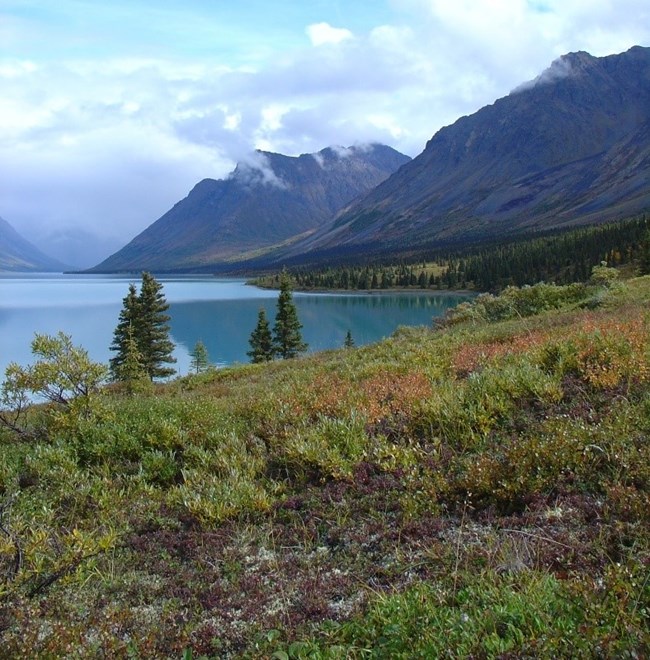Learn about NRCAs
The Natural Resource Condition Assessment (NRCA) Program provides framework, funding, and publishing support to parks to aid in the synthesis and documentation of natural resource conditions. Condition assessment reports are a tool to describe selected park resources, and record a snapshot of their current condition, identify trends, and identify potential or current threats and stressors. Understanding the condition and trend of natural resources is key for parks and NPS planners to appropriately prioritize and allocate stewardship resources.

NPS Photo.
Several events in history, caused both by human-related activities and natural processes, have altered the resources of the park. Air pollutants, earthquakes and volcanic activity, visitor impacts, and resource development adjacent to the park can all affect the natural resources within and are factors that resource managers must consider for future park plans.
Traditional NRCA Report: 2014
In an effort to better understand the natural resources and processes in Lake Clark National Park and Preserve, a Natural Resource Condition Assessment was written and published in 2014. This assessment was a collaborative project between the National Park Service and St. Mary’s University of Minnesota. The team compiled data and chose 14 resource topics to evaluate:
- Salt marsh communities |
- Air quality |
|||||
- Brown bear |
- Water quality |
|||||
- Dall sheep |
-Water quantity |
|||||
- Moose |
- Climate |
|||||
- Bald eagles |
- Glaciers |
|||||
- Salmon |
||||||
- Resident fish |
The assessment revealed that conditions varied. Three resources were in good condition (brown bear, Dall’s sheep, and bald eagles); one resource was given a condition rating of moderate concern (moose); three resources were given a condition rating of significant concern (caribou, climate, and glaciers); and one resource had an unknown condition (black bears). The evaluation of salmon and resident fish was unfinished, and therefore the conditions were unreported in this assessment. The remaining four resources (salt marsh communities, air quality, water quality and water quantity) were not assigned condition rating because it was not considered an appropriate measure.
Lake Clark National Park and Preserve faces many challenges in the future, including climate change, changing landscape dynamics, development adjacent to the park, and other anthropogenic factors. Resource managers at the park will continue to strive to preserve the natural resource within these stunning landscapes.
Lake Clark National Park and Preserve faces many challenges in the future, including climate change, changing landscape dynamics, development adjacent to the park, and other anthropogenic factors. Resource managers at the park will continue to strive to preserve the natural resource within these stunning landscapes.
For other reports and natural resource datasets visit the NPS Data Store.
Source: NPS DataStore Collection 7765 (results presented are a subset). To search for additional information, visit the NPS DataStore.
Last updated: February 25, 2022
